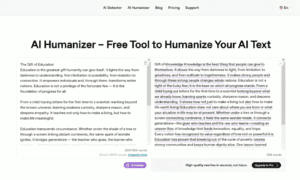Agriculture, a backbone of the global economy, is experiencing a significant transformation driven by advanced technologies. Abhishek Kumar Sinha‘s recent exploration into multi-cloud agricultural systems presents a groundbreaking approach, combining the power of IoT, big data, machine learning, and cloud platforms to enhance precision farming and optimize resource use. Through this innovation, agricultural systems are evolving to become more efficient, sustainable, and productive, opening the door for smarter farming practices worldwide.
A New Era in Data-Driven Agriculture
The evolution of agriculture is driven by vast amounts of data from farm sensor networks, generating petabytes annually. Advanced sensors monitor soil moisture, weather conditions, and more, while drones and automated machinery contribute additional data. Real-time data from soil sensors and weather stations offer insights that help farmers optimize irrigation, detect nutrient deficiencies, and forecast crop yields accurately. These advancements enhance resource management and decision-making, ultimately improving crop yields and overall agricultural efficiency.
Multi-Cloud Architecture: The Backbone of Precision Farming
As farms generate vast amounts of data, traditional single-cloud infrastructures struggle to keep up. Multi-cloud architectures offer a solution, improving performance and reducing costs. By integrating specialized services like machine learning tools and IoT platforms from different providers, these systems process millions of sensor readings each minute. They ensure high reliability, low latency, and real-time decision-making, especially during critical farming periods, boosting crop yields by up to 20%.
Real-Time Data Collection and Processing
These systems excel in real-time data processing, with IoT sensors monitoring soil moisture, temperature, and crop health. Edge computing enhances this by processing data locally, reducing bandwidth usage and improving response times. Combining real-time processing with cloud analytics ensures 99.99% data availability, enabling rapid responses to issues like pest outbreaks or irrigation needs within 150 milliseconds.
Machine Learning Enhances Crop Management
The use of machine learning (ML) in agriculture is not limited to data collection; it extends to actionable insights that directly impact crop management. Through sophisticated algorithms, multi-cloud systems analyze vast amounts of data to predict crop yield, identify early signs of disease, and recommend resource allocation strategies. ML models process millions of data points daily, enabling predictive models that can forecast crop yields with an accuracy rate of 89%. Moreover, these systems use deep learning techniques to detect crop diseases earlier than traditional methods, thus preventing losses and ensuring optimal crop health.
Optimizing Resources for Sustainability
Sustainability is a core objective in modern agriculture, and multi-cloud systems contribute significantly to this goal. By leveraging AI and machine learning, these systems are able to optimize resource usage, such as water and fertilizers. For instance, smart irrigation systems have been developed that adjust water usage based on real-time soil moisture data and weather forecasts, leading to a 45% reduction in water consumption while maintaining healthy crops. Such innovations not only enhance farm productivity but also contribute to the conservation of vital resources, ensuring the long-term sustainability of farming practices.
Security and Compliance: Safeguarding Agricultural Data
As agriculture becomes more tech-driven, the security of data and compliance with regulatory standards have become pressing concerns. The integration of robust security frameworks is critical in protecting sensitive agricultural data, which can include everything from soil composition to financial information. Multi-cloud systems implement advanced security measures, such as encrypted communication channels and real-time threat detection, ensuring that the data is safe from cyber threats. Compliance with data protection regulations, like GDPR, is also a key feature of these systems, ensuring that farming data is handled in a legally compliant manner.
The Future of Farming: Data-Driven and Smarter
The integration of multi-cloud systems with IoT and machine learning is setting new standards in precision farming. These technologies are helping farmers make better decisions, improve resource use, and increase yields, all while ensuring sustainability and data security. As the technology continues to evolve, its application in agriculture will become even more refined, contributing to food security and environmental preservation. As Abhishek Kumar Sinha‘s research suggests, the future of agriculture will be increasingly driven by data, making it smarter, more efficient, and better equipped to meet the challenges of feeding a growing global population.





























